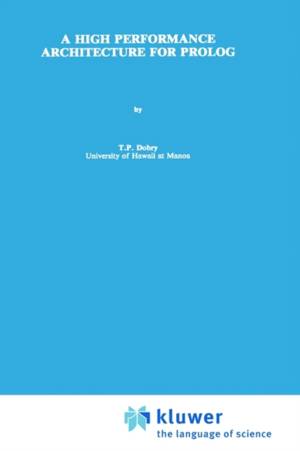
- Afhalen na 1 uur in een winkel met voorraad
- Gratis thuislevering in België vanaf € 30
- Ruim aanbod met 7 miljoen producten
- Afhalen na 1 uur in een winkel met voorraad
- Gratis thuislevering in België vanaf € 30
- Ruim aanbod met 7 miljoen producten
Zoeken
Omschrijving
Artificial Intelligence is entering the mainstream of com- puter applications and as techniques are developed and integrated into a wide variety of areas they are beginning to tax the pro- cessing power of conventional architectures. To meet this demand, specialized architectures providing support for the unique features of symbolic processing languages are emerging. The goal of the research presented here is to show that an archi- tecture specialized for Prolog can achieve a ten-fold improve- ment in performance over conventional, general-purpose architec- tures. This book presents such an architecture for high perfor- mance execution of Prolog programs. The architecture is based on the abstract machine descrip- tion introduced by David H.D. Warren known as the Warren Abstract Machine (W AM). The execution model of the W AM is described and extended to provide a complete Instruction Set Architecture (lSA) for Prolog known as the PLM. This ISA is then realized in a microarchitecture and finally in a hardware design. The work described here represents one of the first efforts to implement the W AM model in hardware. The approach taken is that of direct implementation of the high level WAM instruction set in hardware resulting in a elSe style archi- tecture.
Specificaties
Betrokkenen
- Auteur(s):
- Uitgeverij:
Inhoud
- Aantal bladzijden:
- 218
- Taal:
- Engels
- Reeks:
- Reeksnummer:
- nr. 90
Eigenschappen
- Productcode (EAN):
- 9780792390602
- Verschijningsdatum:
- 31/01/1990
- Uitvoering:
- Hardcover
- Formaat:
- Genaaid
- Afmetingen:
- 163 mm x 243 mm
- Gewicht:
- 530 g

Alleen bij Standaard Boekhandel
+ 307 punten op je klantenkaart van Standaard Boekhandel
Beoordelingen
We publiceren alleen reviews die voldoen aan de voorwaarden voor reviews. Bekijk onze voorwaarden voor reviews.











